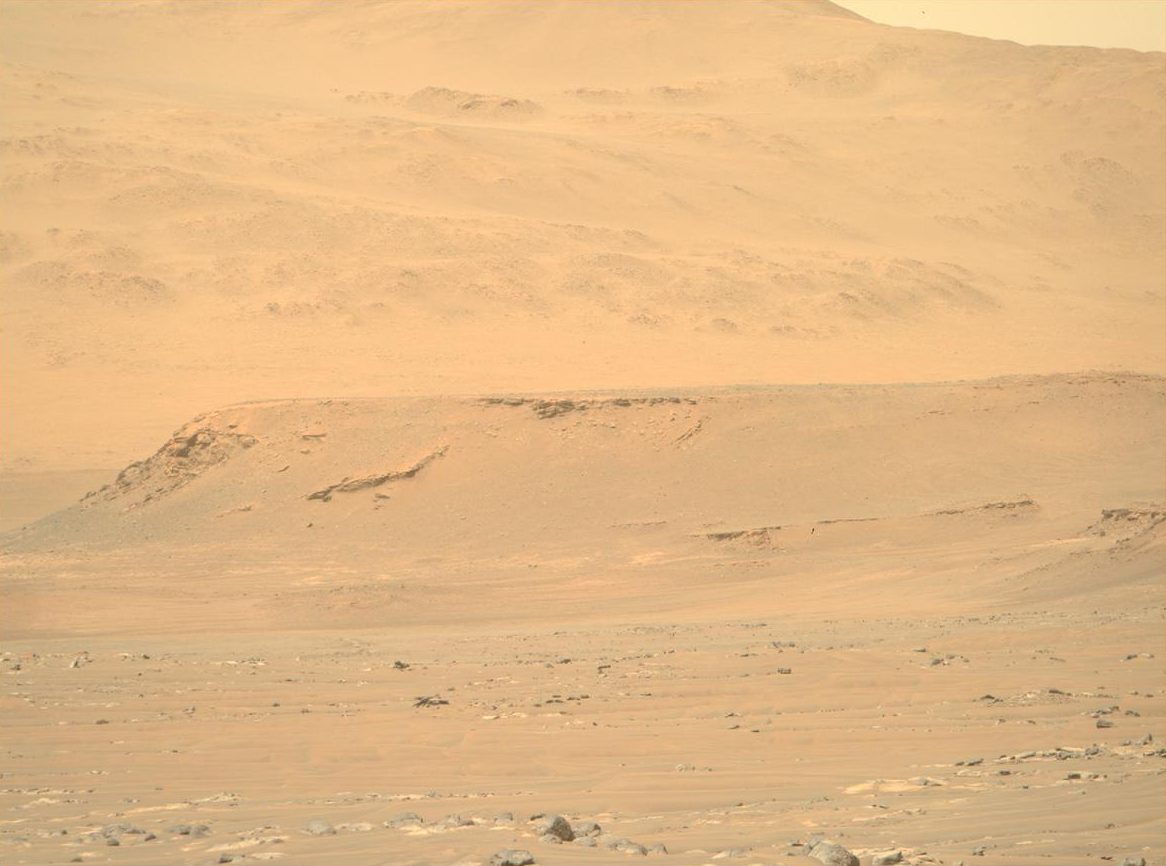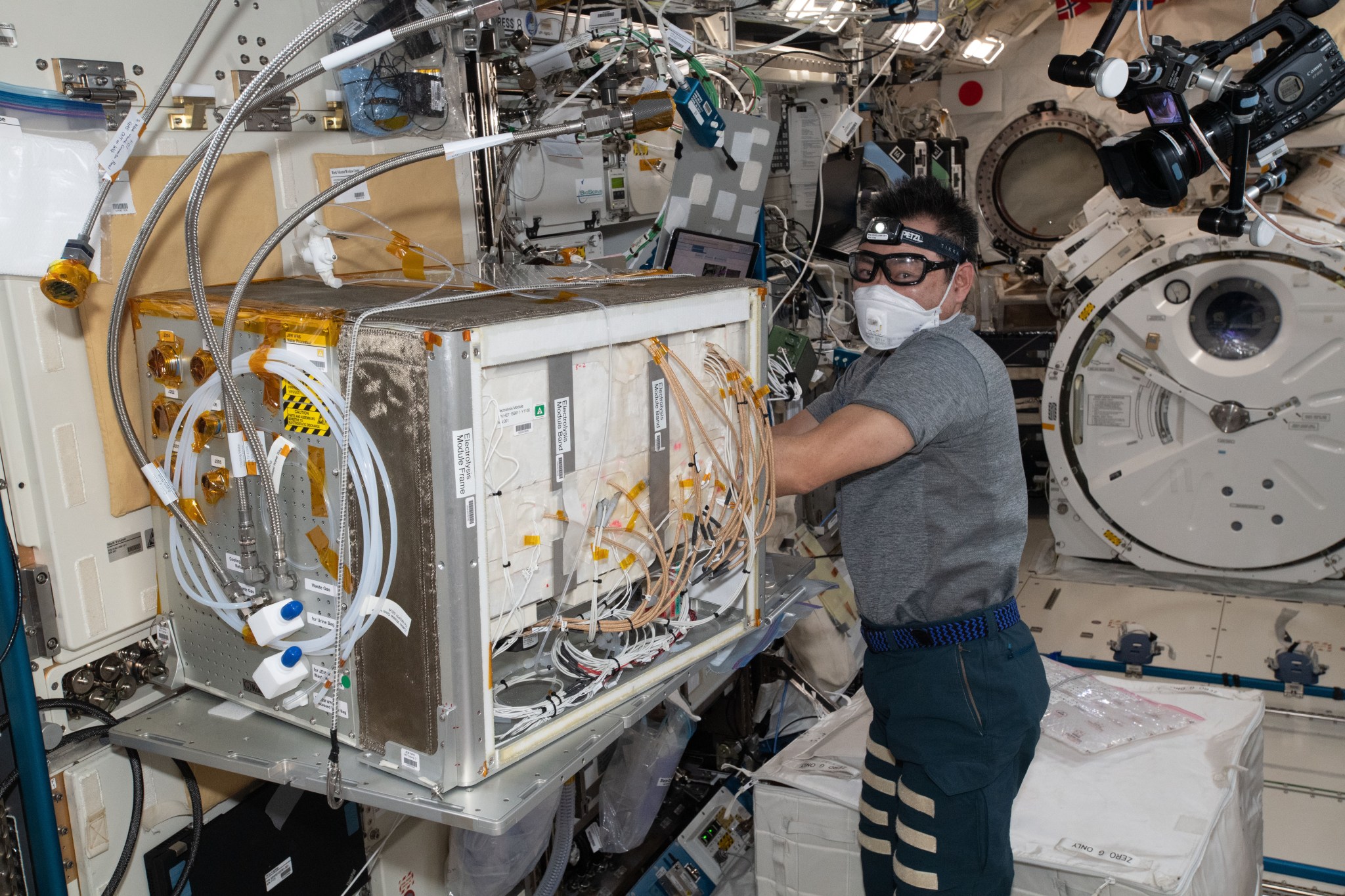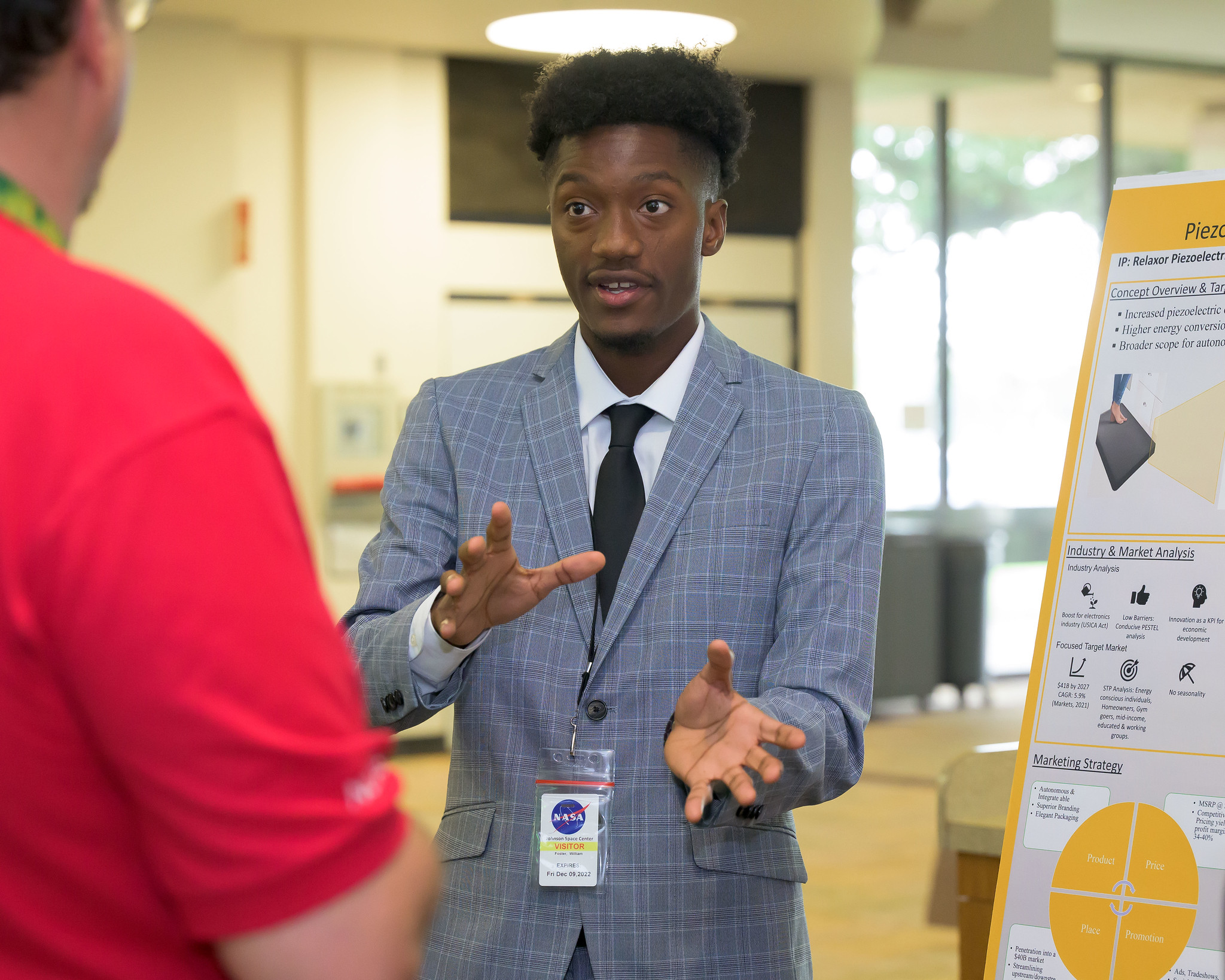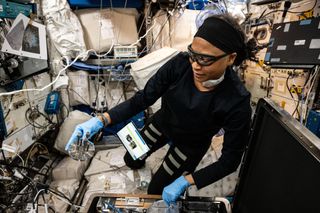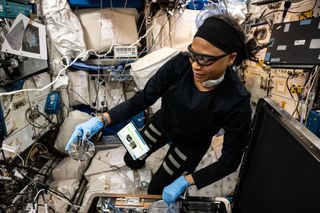Mars: Perseverance (Mars 2020) Perseverance Home Mission Overview Rover Components Mars Rock Samples Where is Perseverance? Ingenuity Mars Helicopter Mission Updates Science Overview Objectives Instruments Highlights Exploration Goals News and Features Multimedia Perseverance Raw Images Images Videos Audio More Resources Mars Missions Mars Sample Return Mars Perseverance Rover Mars Curiosity Rover MAVEN Mars Reconnaissance Orbiter Mars Odyssey More Mars Missions The Solar System The Sun Mercury Venus Earth The Moon Mars Jupiter Saturn Uranus Neptune Pluto & Dwarf Planets Asteroids, Comets & Meteors The Kuiper Belt The Oort Cloud 2…
Read MoreMonth: September 2024
Station Science Top News: September 13, 2024
JAXA (Japan Aerospace Exploration Agency) researchers examined the structures of four titanium-based compounds solidified in levitators in microgravity and on the ground and found that the internal microstructures were generally similar. These results could support development of new materials for use in space manufacturing. To produce glass or metal alloys on Earth, raw materials are placed into a container and heated. But reactions between the container and the materials can cause imperfections. The JAXA Electrostatic Levitation Furnace can levitate, melt, and solidify materials without a container. The facility enables measurement of the thermophysical properties of high…
Read MoreOttawa’s Fall Rhapsody
An astronaut aboard the International Space Station shot this photo of peak fall colors around Ottawa, the capital of Canada. West of downtown Ottawa lies Gatineau Park, where sugar maple leaves turn orange-red and hickories turn golden-bronze during the season, known regionally as “the Fall Rhapsody.”
Read MoreGoing Back-to-School with NASA Data
4 min read Preparations for Next Moonwalk Simulations Underway (and Underwater) As students head back to school, teachers have a new tool that brings NASA satellite data down to their earthly classrooms. The My NASA Data homepage categorizes content by areas of study called spheres and also Earth as a system. NASA/mynasadata.larc.nasa.gov For over 50 years of observing Earth, NASA’s satellites have collected petabytes of global science data (that’s millions and millions of gigabytes) – with terabytes more coming in by the day. Since 2004, the My NASA Data website has…
Read MoreNASA Mobilizes Resource for HBCU Scholars, Highlighted at Conference
A NASA MITTIC participant during the competition’s on-site experience and Space Tank at NASA’s Johnson Space Center in Houston on Dec. 7, 2022. (Credit: Riley McClenaghan) NASA will spotlight its program to engage underrepresented and underserved students in science, technology, engineering, and math at the 2024 National Historically Black Colleges and Universities (HBCU) Week Conference in Philadelphia, from Sunday, Sept. 15, to Thursday, Sept. 19. As part of the White House’s initiative to advance educational equity and economic opportunities through HBCUs, NASA’s Minority University Research and Education Project (MUREP) provides HBCU…
Read MoreCould we turn the sun into a gigantic telescope?
We have some incredibly powerful telescopes that have given us spectacular views of the cosmos and allowed us to look back to the early days of the universe. These observatories, such as the James Webb Space Telescope (JWST), are amazing feats of engineering that have required billions of dollars and decades of work. But what if we could access an even better telescope that already exists? This wouldn’t be a typical telescope. It wouldn’t even come with a lens. But it would be by far the most powerful telescope we’d…
Read MoreSpaceX’s private Polaris Dawn astronauts splash down to end historic spacewalk mission (video)
Polaris Dawn has landed. The historic SpaceX astronaut mission — which conducted the first-ever private spacewalk, among other achievements —returned to Earth today (Sept. 15), splashing down safely in the Gulf of Mexico off the coast of Florida at 3:36 a.m. EDT (0736 GMT). “Polaris Dawn we are mission complete. Thanks for all the big help pulling this mission together,” said mission commander Jared Isaacman after the crew splashed down in the ocean. A drone view of the Polaris Dawn crew capsule after splashdown on Sept. 15, 2024. (Image credit:…
Read MoreSpaceX’s private Polaris Dawn astronauts will return to Earth early Sunday. Here’s how to watch live online
After an eventful five days in space, which included the first-ever commercial spacewalk, the private astronaut crew of Polaris Dawn is returning to Earth. If all goes according to plan, the SpaceX Dragon capsule Resilience — orbital home to the four-person over the past five days — will splash down in the Gulf of Mexico off the coast of Dry Tortugas, Florida on Sunday, Sept. 15, at about 3:36 a.m. EDT (0736 GMT), SpaceX said in an update. The landing will mark the end of Polaris Dawn, a mission to…
Read MoreAstronauts 3D-print 1st metal part while on ISS
ESA scientists have successfully demonstrated 3D printing of a metal part in space for the first time. 3D printing in space poses challenges, as many methods rely on gravity to position materials during the printing process. This is because when creating metal structures, molten metal is often used as part of the filament, or printable medium. In space, its behavior can be unpredictable, which can result in poor-quality objects, as the filament might shift or be placed incorrectly due to the lack of gravitational forces. Scientists therefore had to adapt…
Read MoreAstronauts 3D-print first metal part while on ISS
ESA scientists have successfully demonstrated 3D printing of a metal part in space for the first time. 3D printing in space poses challenges, as many methods rely on gravity to position materials during the printing process. This is because when creating metal structures, molten metal is often used as part of the filament, or printable medium. In space, its behavior can be unpredictable, which can result in poor-quality objects, as the filament might shift or be placed incorrectly due to the lack of gravitational forces. Scientists therefore had to adapt…
Read More